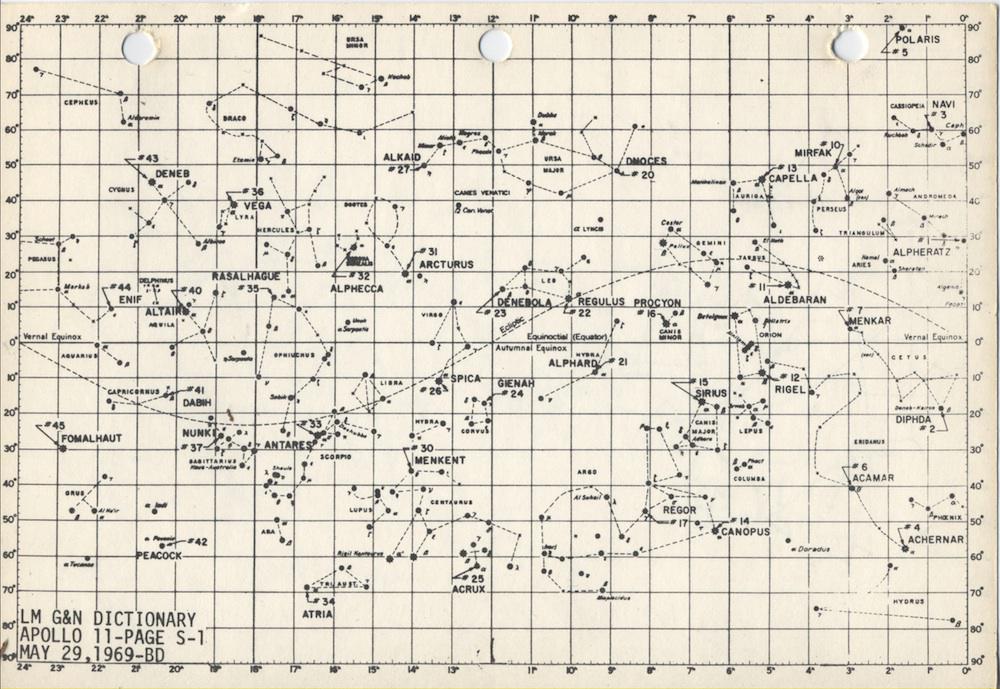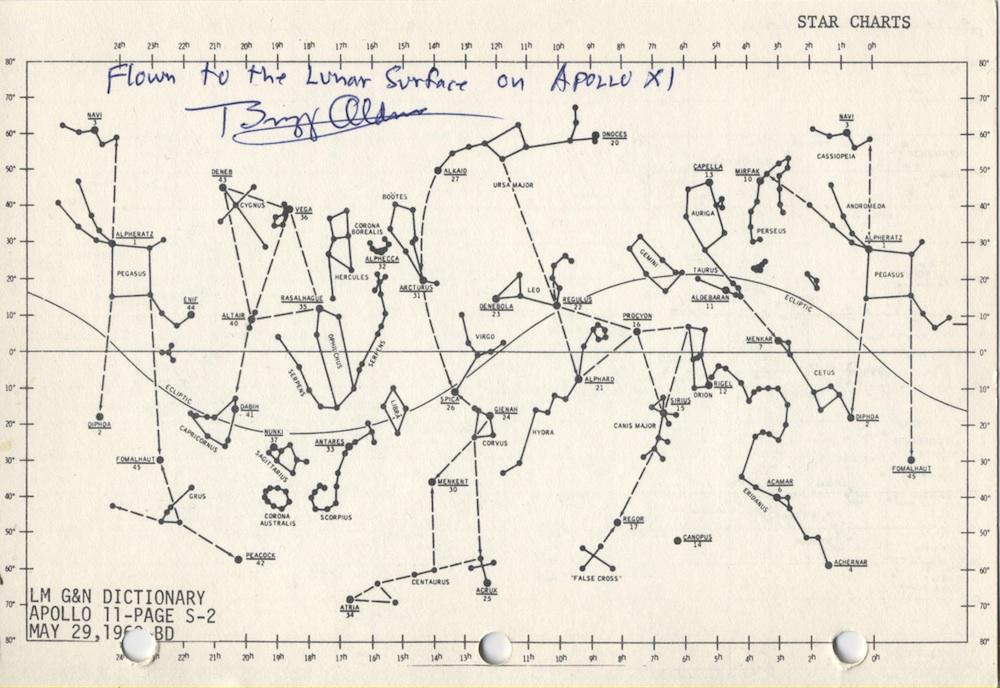The Vault is Slate’s history blog. Like us on Facebook, follow us on Twitter @slatevault, and find us on Tumblr. Find out more about what this space is all about here.
These star charts were part of a guidance and navigation (G&N) dictionary carried by the Apollo 11 lunar module when it reached the moon’s surface on July 20, 1969.
Inside the module, the computer that provided navigation and guidance required astronauts to use a telescope to sight three stars, find their locations on the gridded star chart, and enter their numerical codes into the computer. Triangulating from this information, the computer would redirect the spacecraft onto a desired trajectory.
In an extensive comparative post on Apollo mission star charts and their uses, collector and historian Lawrence McGlynn includes several images of the navigation unit that astronauts used to key in the stars’ numbers, as well as star charts used in earlier and later missions.
McGlynn writes that the second star chart here contains a memorial for the three astronauts lost in Apollo 1, Gus Grissom, Roger Chaffee, and Edward White II. Star 3 (“Navi”) is Grissom’s middle name, “Ivan,” spelled backward. Star 20 (“Dnoces”) is “second” backward, for Edward White II. And Star 17 (“Regor”) is “Roger” backward, for Chaffee. Grissom, involved in the development of the charts for Apollo 1, named the three stars this way; after the three perished in a launch pad fire on Jan. 27, 1967, NASA kept the designations.
Click on the images to reach zoomable versions.
*Correction, Oct. 17, 2014: This post originally misstated that the moon landing took place on May 29, 1969. It took place on July 20, 1969.

NASA’s Apollo 11 Lunar Surface Journal site/Lawrence McGlynn.

NASA’s Apollo 11 Lunar Surface Journal site/Lawrence McGlynn.